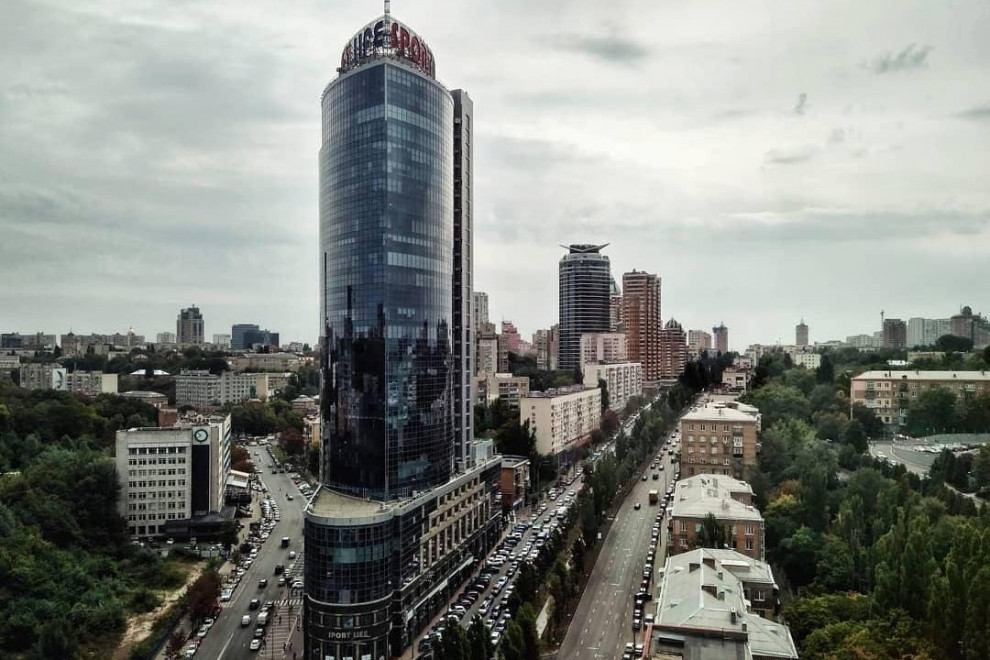Buy and Hold? Why Did Max Krippa Buy the "Parus" Business Center?

Following the actions of experienced investors has become a kind of hobby for journalists and experts. It is not easy to decipher the motives of the market's major players, but if you manage to do so, you can notice certain trends and even look into the near future. One of the successful cases that deserves attention is the acquisition of the "Parus" Business Center by investor Max Krippa. What strategy is the investor implementing, and what can we expect?
Little is known about investor Max Krippa. In professional circles, he is known as an experienced individual engaged in direct and venture investments. Max Krippa's interests include technology, e-sports, computer games, and now real estate. His interest in real estate began to manifest in recent years, and recently there was news about a change in the ownership of the "Parus" Business Center.
It is unknown how much money Max Krippa directed towards the acquisition of the commercial property. By the most modest estimates, about 100 million dollars. Naturally, many wondered why the investor decided to switch segments and start working with an atypical asset.
No one knows the exact answer to this question except Max Krippa himself, and unfortunately, he does not strive for publicity. But even if Max Krippa gave an interview, he would hardly directly answer the question about the investment goals – no professional experienced investor does. However, an analysis of leading investment strategies can point to possible motives for buying the "Parus" Business Center.
Buy and Hold: A Top-Shelf Choice
The simplest answer and, nevertheless, quite likely. Quite often, investors buy real estate simply to generate rental income. Implementing such a strategy is not associated with high risks and is often used in parallel with working with other assets.
Simply put, “buy and hold” is a strategy in which a reliable real estate object is purchased and rented out. Such an asset can be held for a long time – until its price significantly increases.
The "Parus" Business Center, in this sense, is an ideal object. 50 thousand square meters of Class A commercial real estate were ready for rent on the day of the deal. This is assuming that no floor or office was already rented at the time of purchase, which is not the case. In short, Max Krippa bought a skyscraper that began to pay for itself from the first day of acquisition.
Prime: A Slight Variation from “Buy and Hold”
The class of the "Parus" Business Center and its location in the very center of the capital suggest a second possible angle from which to consider Max Krippa's investment. Perhaps the investor had the idea to implement Core, or, in other words, Prime strategies.
This involves the deliberate purchase of a premium segment property to generate stable income. The difference from Buy and Hold is small and mainly lies in asset management. In the first case, the object does not require modernization, and the investor does not need to take active steps or invest capital to increase profitability. In the second case, modernization may be aimed at increasing profitability and the value of the asset for resale.
Interestingly, the "Parus" Business Center hangs between these two very similar strategies and is equally suitable for both. Some real estate market experts insist that the "Parus" BC is a 100% premium class. Another part hints that the skyscraper needs minor modernization and a fresh repair.
Understanding which of the two possible strategies Max Krippa is implementing will be possible based on his future steps. However, it is much more interesting to consider the third option.
Mixed-Use: Not Just a Business Center
Not very often, but sometimes investors buy commercial real estate not only to generate rental income. Some analysts have suggested that Max Krippa bought the "Parus" BC not so much to diversify his portfolio or generate passive income but to create a platform for the development of his other assets.
It is assumed that the investor plans to create a modern and unique e-sports hub for Ukraine. The investor's primary focus is on the e-sports segment; Max Krippa, among other things, owns the e-sports organization NAVI.
Experts note that the lack of infrastructure is a restraining factor for the industry's growth. A large hub with gaming arenas, training and educational centers, coworking spaces, offices, and other spaces could significantly strengthen Ukrainian e-sports and, therefore, increase the segment's profitability.